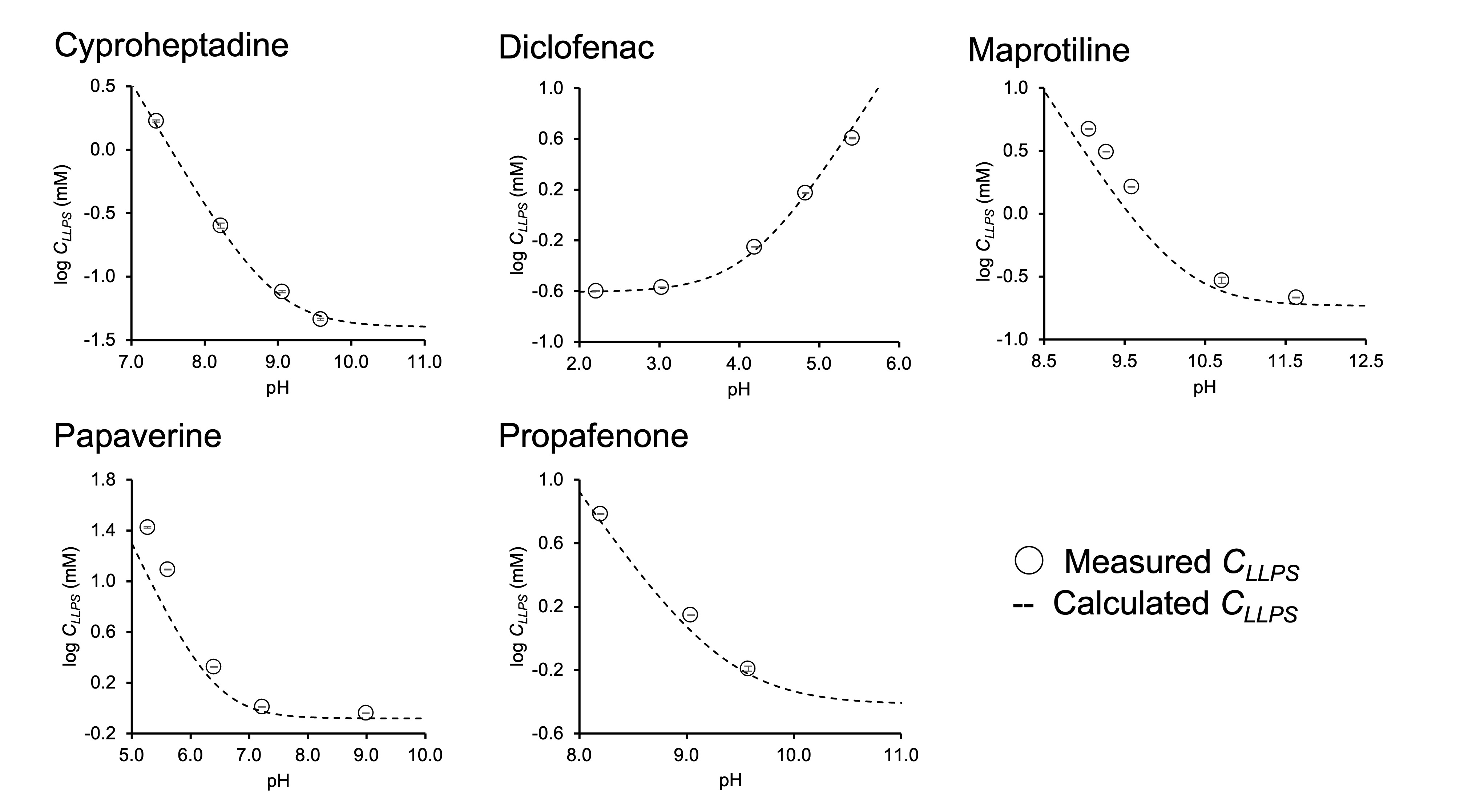Formulation and Delivery - Chemical
Category: Late Breaking Poster Abstract
(M1130-03-21) Is the pH-LLPS Concentration Profiles follow the Henderson-Hasselbalch Equation?
Monday, October 23, 2023
11:30 AM - 12:30 PM ET
- TU
Taiga Uekusa (he/him/his)
PhD student
Ritsumeikan University
Kusatsu, Shiga, Japan - KS
Kiyohiko Sugano, Ph.D.
Ritsumeikan University
Kusatsu, Shiga, Japan
Presenting Author(s)
Main Author(s)
Purpose: Recently, the liquid-liquid phase separation (LLPS) of a drug compound attracted a lot of attention in drug development. In previous study, the pH–LLPS concentration (CLLPS) profiles of dissociative drugs were reported to follow the Henderson-Hasselbalch (HH) equation. However, the number of drugs used for verification was limited. On the other hand, in some cases, the pH–crystalline solubility profile did not follow the HH equation. The purpose of the present study was to measure the pH–CLLPS profile of various drugs.
Methods: Cyproheptadine (pKa: 8.9), diclofenac (pKa: 4.1), maprotiline (pKa: 10.2), papaverine (pKa: 6.4), and propafenone (pKa: 9.3) were used as model drugs. Each drug salt was dissolved in distilled water. A NaOH (0.01 or 0.05 M) or 500 mM buffer (citric acid, phosphoric acid, boric acid, pH 1.0-10) (70 μL) was added in the quartz cell and set on a UV/VIS spectrometer. The drug solution (630 μL) was added to a quartz cell. The turbidity was measured at 500 nm within 10 sec at 25℃. To confirm the precipitant was not made crystalline within 10 s, the precipitation tests were also performed under the polarized light microscope.
Results: The pH–CLLPS profiles followed the HH equation at cyproheptadine, diclofenac, and propafenone. However, in the case of maprotiline and papaverine, at a pH below p</span>Ka, the measured CLLPS value was about twice the predicted value. Previously, the pH–crystalline solubility profile of maprotiline and papaverine was reported to deviate from the HH equation due to the aggregation of cationic species (BnHnn+) and aggregation between the free base and the protonated species (BnH+). Therefore, the aggregate formation would be the one of the reasons for the deviation of the pH–CLLPS profile from the HH equation.
Conclusion: The pH-CLLPS profile did not follow the HH equation, probably because of the aggregate formation. The results of this study are important for estimating maximum drug concentrations in the human gastrointestinal tract.
References: [1] Indulkar, A. S., Box, K. J., Taylor, R., Ruiz, R., & Taylor, L. S. (2015). pH-dependent liquid–liquid phase separation of highly supersaturated solutions of weakly basic drugs. Molecular pharmaceutics, 12(7), 2365-2377.
[2] Uekusa, T., & Sugano, K. (2023). Prediction of Liquid–Liquid Phase Separation at the Dissolving Drug Salt Particle Surface. Molecular Pharmaceutics.
 pH–LLPS concentration profiles of cyproheptadine, diclofenac, maprotiline, papaverine, and propafenone (mean ± S.D., n = 3).
pH–LLPS concentration profiles of cyproheptadine, diclofenac, maprotiline, papaverine, and propafenone (mean ± S.D., n = 3).